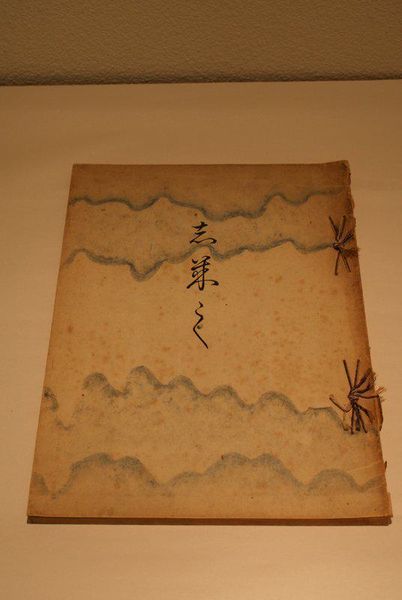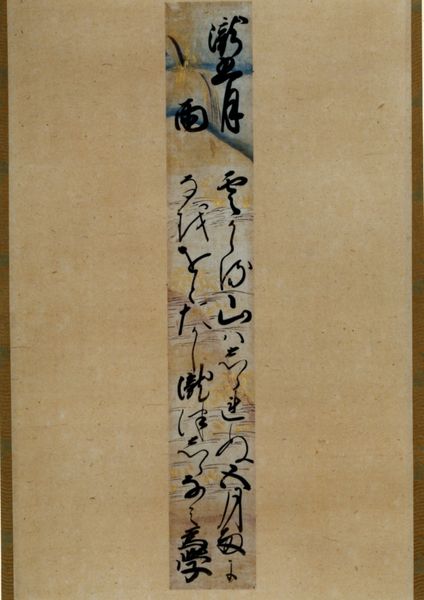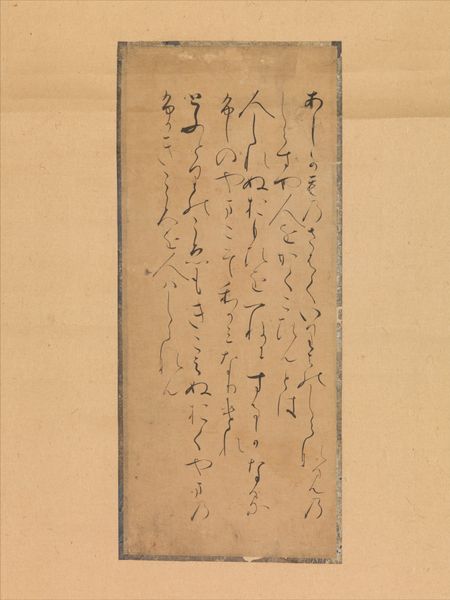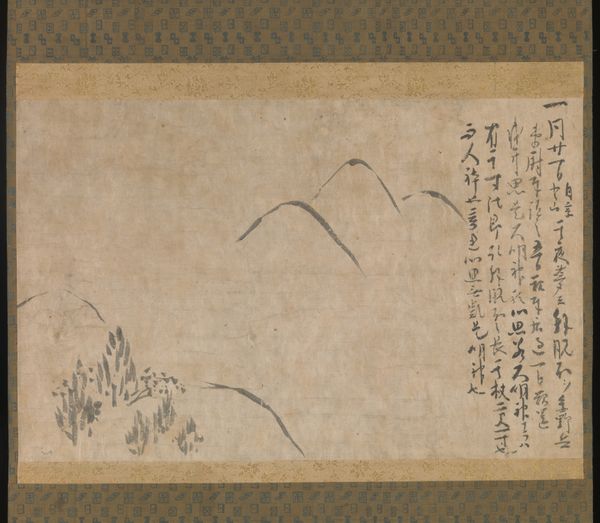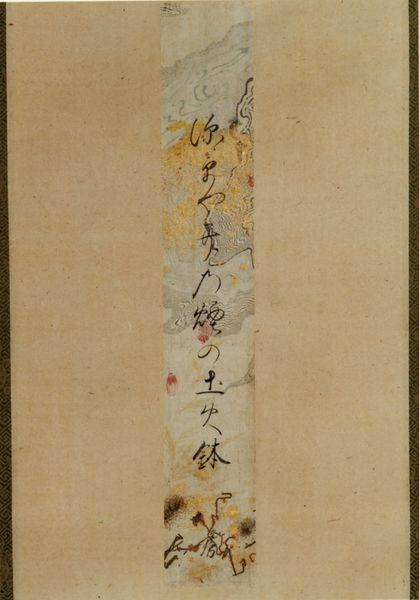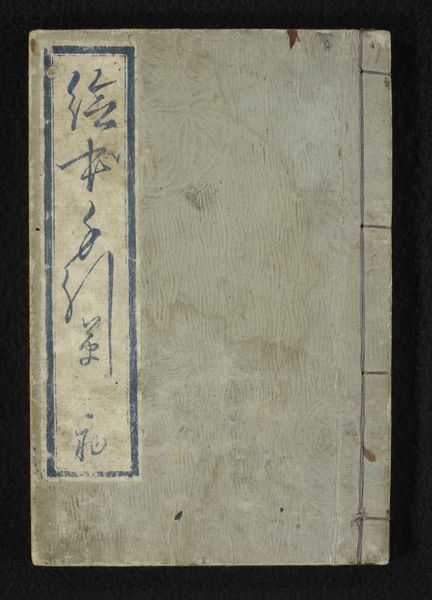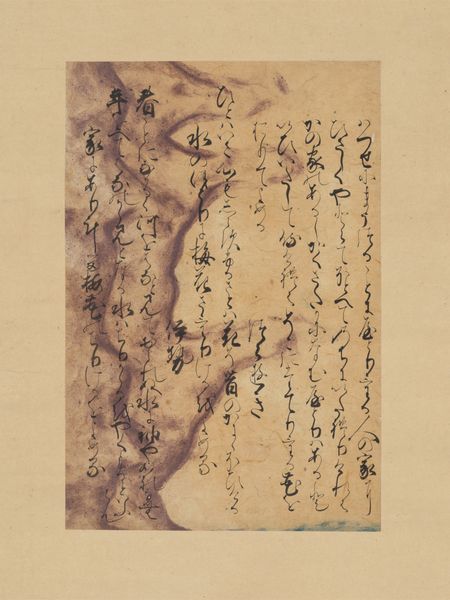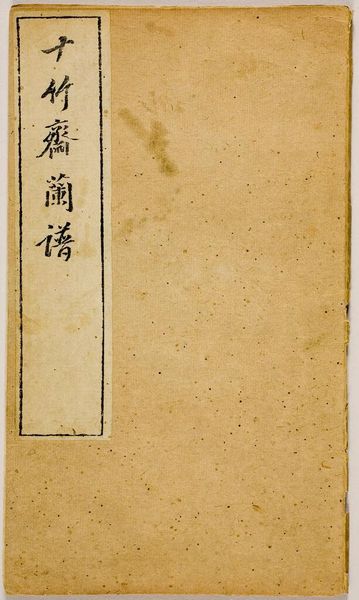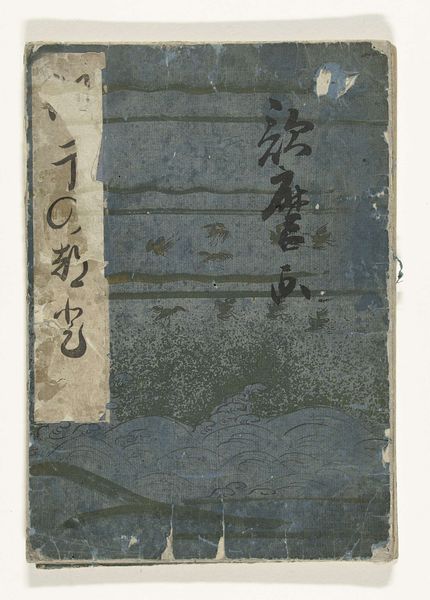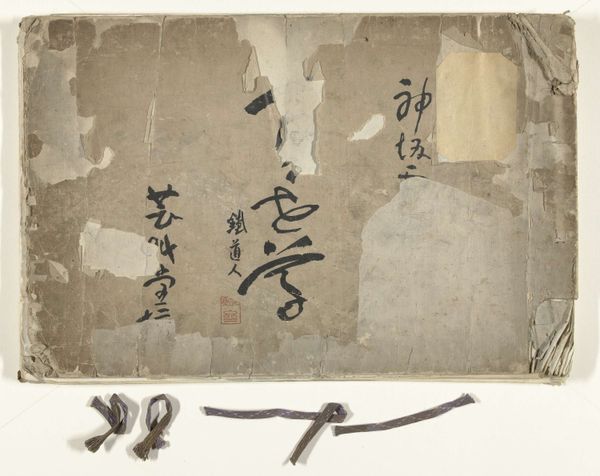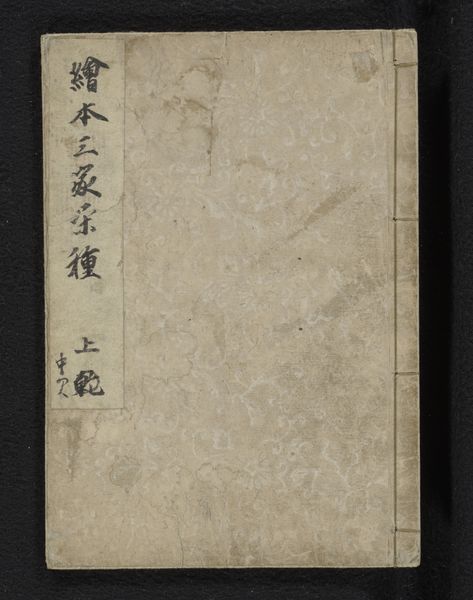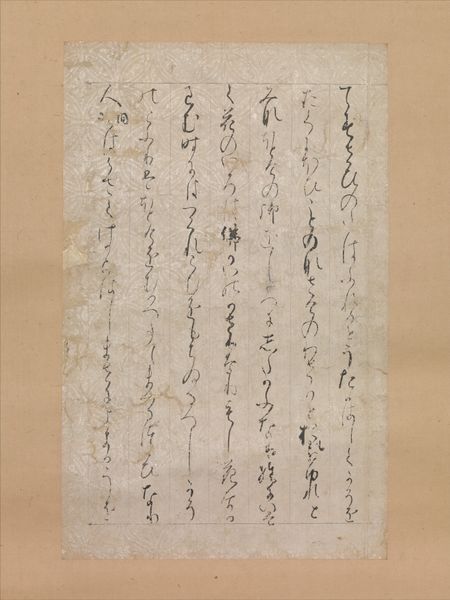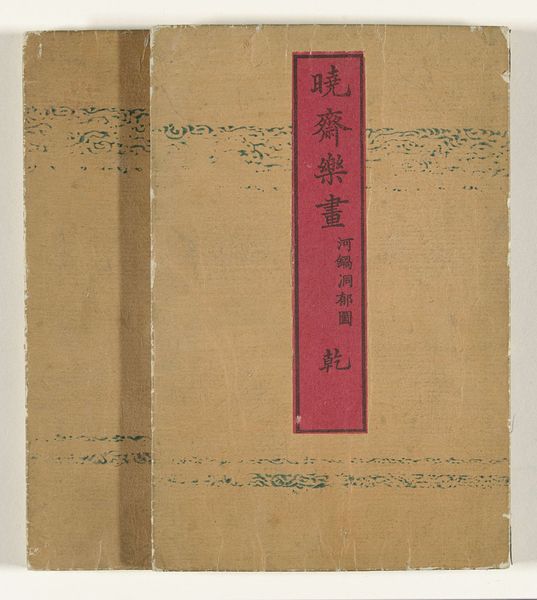
Dimensions: 1/2 × 8 1/2 × 12 1/4 in. (1.27 × 21.59 × 31.12 cm)
Copyright: No Copyright - United States
Editor: We're looking at "Picture Cards" from 1901, by Kamisaka Sekka. It’s a painting and drawing made with ink, watercolor, and paper and held at the Minneapolis Institute of Art. The landscape theme almost feels secondary; the texture of the paper and the repeated wave patterns really catch my eye. How do you interpret this work, focusing on its structure and visual elements? Curator: Observe how the artist deploys a limited palette to achieve a powerful effect. The ochre ground, layered with varying tones of blue in an undulating pattern, structures the piece. The script interjected into this landscape performs a dual role. It functions semantically but also as a formal element, disrupting and reorganizing our gaze. Editor: That's fascinating, I hadn’t considered the text as a visual element, too. Do the materials themselves – the ink and watercolor on paper – contribute to the reading? Curator: Indeed. The choice of paper lends a tactile quality. The absorbency of the material governs the flow of the ink and watercolor, influencing the sharpness and blending of the forms. The edges where the paper appears to have worn offer us insight into the history of the object itself. This highlights a dialogue between the artist's intention and the inherent qualities of the chosen medium. Consider how the piece functions as a totality; the lines aren't simply representing landscape. They work to abstract that representation to a formal arrangement of shape and space. Editor: So, by focusing on the formal components – the texture, line, color and the layering - the work almost transcends being just a landscape drawing? Curator: Precisely. We start to appreciate the dynamic relationship between the depicted landscape and the artist's manipulation of form. Through this, the painting reveals its own unique material language, divorced from representational constraints. Editor: I see that the composition is just as meaningful as the depiction of landscape itself. Thanks for illuminating the nuances of its structure. Curator: It has been a pleasure. Examining art through its formal properties offers rich insights, highlighting how the artist shapes meaning through material and arrangement.
Comments
minneapolisinstituteofart almost 2 years ago
⋮
This two-volume design collection plays with designs presented in the square format of traditional picture or poem cards. Volume one features 32 images, including two color prints in green and orange, while the remaining designs and the 30 images in volume two are depicted in monochrome ink woodblock print. The designs include images from nature, such as waves and plant motifs, but also some abstract patterns.
Join the conversation
Join millions of artists and users on Artera today and experience the ultimate creative platform.
